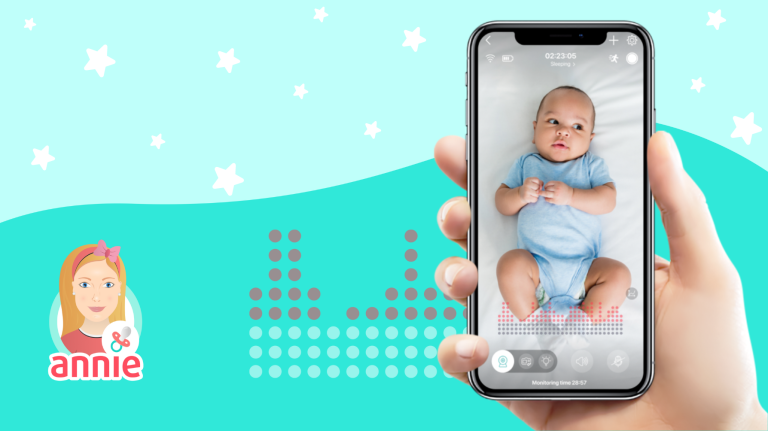
Audio Activity Chart: How does the audio activity chart in the baby monitor work?
- Created:
12. 4. 2024 - Updated:
9. 4. 2024
What kind of information does the audio activity chart provide?
An audio activity chart on a baby monitor shows noises during sleep time in your baby’s room. Basically, the chart is a visual representation of the sounds your baby is making during sleep time.
A baby monitor audio activity chart shows real-time noise and noise history. It also reports noise data such as crying, movement, and asleep.
How does the audio activity chart work?
An audio activity chart in a baby monitor continuously monitors and analyzes sound levels in the baby’s room.
The baby monitor’s microphone is designed to detect sounds, including the baby’s cries, coos, and other noises, as well as periods of silence. The microphone picks up sound from the environment and processes it to identify changes in sound intensity over time. These changes are then translated into visual data, usually represented as an audio activity chart.
The x-axis of the chart shows time, while the y-axis shows sound intensity levels. The chart displays peaks and valleys corresponding to periods of increased or decreased sound activity.
You can determine whether your baby is sleeping peacefully, awake and active, or potentially distressed based on visual cues.
Annie Baby Monitor provides advanced sound detection, distinguishing between crying, talking, and background noise. You can also adjust noise sensitivity settings to reduce false alarms. However, keep in mind that these systems might not be perfect and can sometimes be triggered by other sounds or noises. That’s why it’s best to set it up precisely for your environment to avoid false alerts.
Can I customize alerts based on the audio activity chart?
Yes, Annie Baby Monitor allow you to customize audio activity alerts based on the detected sound levels.
In the Annie Baby Monitor app, once you start monitoring, you can go into the “Settings” and set your sensitivity to sounds. You can choose between Low, Medium, and High sensitivity.
- Low strength 👉 reaction to any noise.
- Medium strength 👉 reaction to mumbling.
- Hight strength 👉 reaction to loud crying.
Adjusting the sound sensitivity levels determines how sensitive the camera is to your baby’s cry. For a quiet sleeper, adjust the sound sensitivity volume to the first bar. This tells the camera to detect subtle sounds and will turn on your video monitor even if your baby makes a little noise.
It is crucial to enable the “Audio analysis” function so that the baby monitor app will alert you if audio is detected.
How Do I Use Audio Activity Chart?
- Start monitoring: Start off by tapping on “Parent Unit” on your phone. By tapping on the “Camera” icon, you can start video monitoring.
- Turn on set up noise sensitivity: Tap on the Setting icon. Set up the strength of sound detection intensity—choose between Low, Medium and High strength.
- Turn on audio analysis: Annie Baby Monitor will recognize the baby’s sound during monitoring and alert you whenever sound or loud crying is detected.
- Turn on the audio activity chart: Tap the “Graph” icon to turn on the noise sensitivity indicator. The x-axis of the chart shows time, while the y-axis shows sound intensity levels.
📖 Explore the must-have features of baby monitor.





